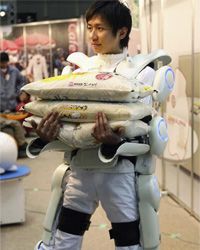Key Takeaways
- Science is working on superpowers like seeing through walls with microwave radar technology, defying gravity with synthetic adhesives inspired by gecko's feet and enhancing human strength with exoskeletons like the HULC.
- Although stopping bullets with smart armor is still in development, innovations like magnetorheological fluids and shear-thickening fluids are making this a possibility.
- Manipulating the weather through cloud seeding is the closest we've come to controlling environmental conditions, though it's far from the comic book fantasies of controlling the climate at will.
Since the dawn of time, or at least the dawn of cartoons and comic books, kids have imagined themselves with superpowers. "Wonder twin powers, activate!" As they grow older, the dreams of flying or talking to animals or being invisible largely fade away.
We've always been fascinated by the idea of these extraordinary abilities. In ancient cultures, mythical beings often possessed special powers, which set them apart from mortal men. If Zeus zinging a lightning bolt in displeasure wasn't a display of a superpower, then what was?
Advertisement
It's human nature to pursue the aspects of folklore (or cartoons) that we find most intriguing and to make them realities. It's also one of the ways that the arts and sciences interact with one another. Imaginative minds come up with ideas like invisibility cloaks, and scientific minds follow through by inventing them.
Should you ever decide you want to experience what it feels like to have superpowers, depending on your expectations, you may be disappointed by the current available options. For instance, science hasn't yet found ways to achieve time travel, teleportation or immortality. But they are working on it.
However, if you set the bar a little lower, you might be pleasantly surprised at the powers science has already bestowed upon us mere mortals. Keep reading to learn about five of them.





